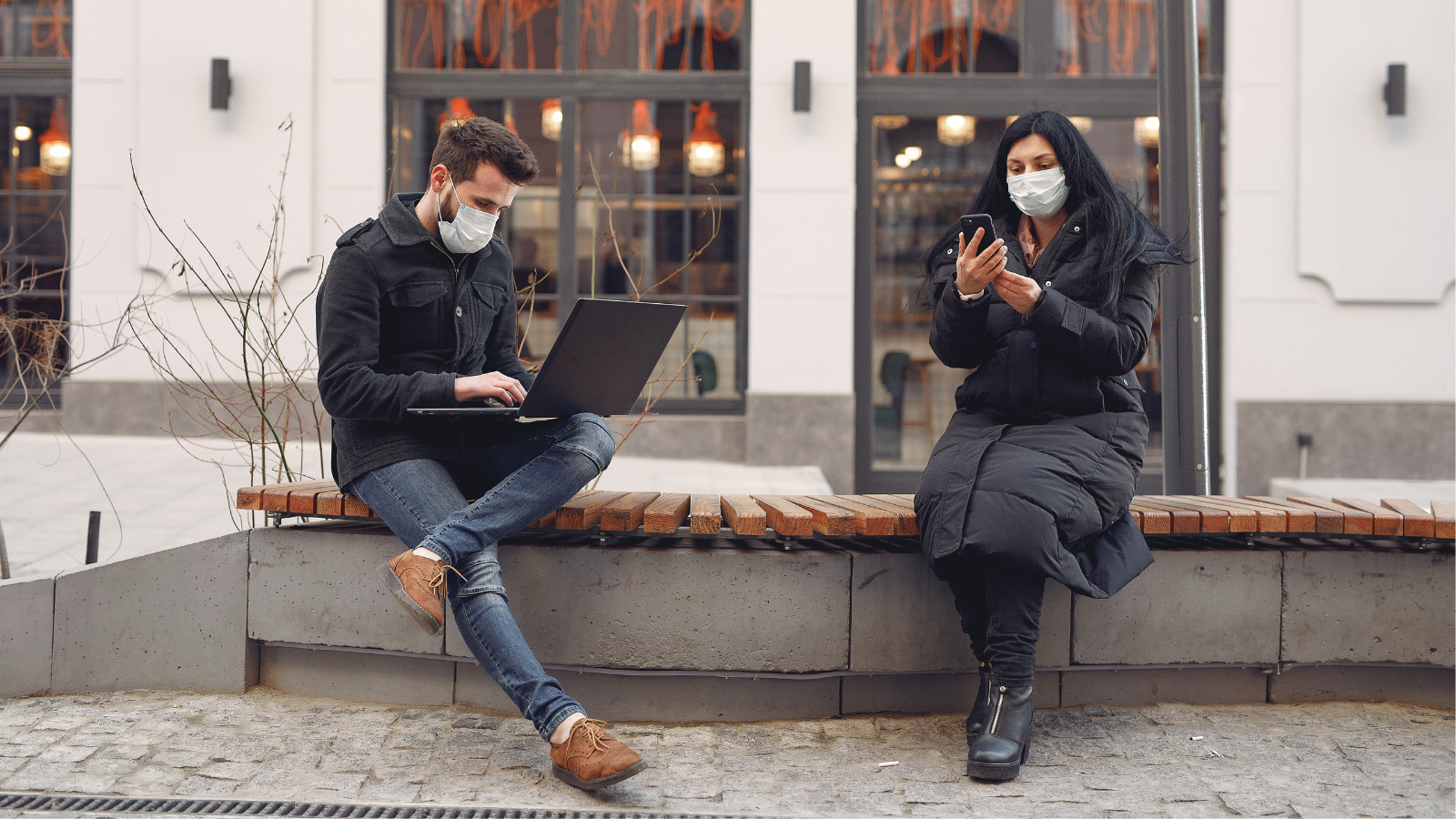31 Oregon Counties Get a Green-light to Reopen – Now We’ll Find Out if We’re Ready
Oregon has given a green light to 31 counties to begin lifting public safety restrictions put in place to contain the novel coronavirus. However, the state as a whole still falls short of many of the benchmarks public health experts recommend states should meet before relaxing social distancing- we’re about to find out if the state is really ready to reopen.

Oregon Governor Kate Brown and the Oregon Health Authority have approved the proposals of 31 counties to move to “Phase One” of the State’s “Reopen Oregon” plan – lifting some restrictions on personal gatherings, restaurants, gyms and personal service providers on Friday, May 15th.
Of the remaining five counties that are not proceeding to Phase One on May 15th, three (in the Portland Metro Area) have not applied to lift restrictions, while two (Marion and Polk) were rejected.
Both Marion and Polk Counties applied to move to Phase One in spite of new outbreaks of the novel coronavirus in the last 14-days, supporting the Governor’s decision to deny their applications. Deschutes County, meanwhile, offered barely any details in its public application on how it planned to expand contact tracing capacity (an express requirement of the State framework), but was still approved for a May 15th reopening. Relaxing restrictions will lead to an increase in cases, and the state must be prepared to reimpose restrictions in counties where new outbreaks occur.
A number of prominent public health experts and think tanks, including the John Hopkins University Center for Health Security, have drafted plans for reopening. While these plans differ on many details, all agree on a general framework to contain new outbreaks of the novel coronavirus. This strategy is “Test, trace, and isolate”:
-
identify infected individuals through testing,
-
identify potential infections by tracing who has come into contact with an infected individual, and
-
isolate infections to stop the spread through the use of quarantines and personal protective equipment.
There are many variations on this general framework, some stressing certain measures more than others. Given how much is still unknown about the virus, and because these measures are interactive – for example having a strong contract testing program could lessen the need for testing – there is no one size-fits all “right” game plan for reopening.
Governor Brown’s “Reopen Oregon” framework sets out public health benchmarks that counties and regions must meet before they begin to relax social distancing requirements.
This is not an evaluation of Governor Brown’s plan, but at a state level, Oregon has not met the minimum criteria identified by the Johns Hopkins public health experts as necessary to effectively implement a test, trace, and isolate strategy while relaxing social distancing guidelines:
-
a 14-day decline in new cases;
-
tests for all who need them;
-
health care capacity to safely treat all patients; and
-
public health capacity to conduct contact tracing.
So, how is Oregon doing under these standards?
Criterion 1: a 14-day decline in new COVID-19 infections (not met)
Oregon has flattened the curve following the implementation of Governor Brown’s “Stay Home, Save Lives” order, but the rate of new infections has only stabilized. New infections have remained flat, with an average of 70 new cases over the past week, 71 cases per day last week, and 64 cases per day the week before. Over the last 14 days, the average change in the number of new infections reported each day has been less than 1.
The “Reopen Oregon” framework uses two benchmarks related to the rate of new infections: (1) a statewide prevalence of flu-like illnesses that is lower than the historical average for this time of year (1.5%), and (2) a 14-day decline in new hospital admissions for COVID-19-like symptoms. While many Oregon counties, especially rural counties, meet these state benchmarks, the state as a whole does not meet the John Hopkins recommended benchmark of declining infections.
Criterion 2: Tests for everyone who needs them (met, for now)
Every state has different circumstances. States with larger populations, larger outbreaks, or higher population density will need a higher volume of testing to accurately identify new outbreaks and contain them. Projections from the Harvard Global Health Institute estimate that Oregon should have the minimum capacity to conduct 2,139 tests per day in order to test all essential workers, symptomatic individuals, and close contacts.
The Oregon Health Authority states that Oregon has the capacity to test 3,000 individuals per day, while it has been averaging 2,287 tests per day over the last week. In theory, this should be enough to track the outbreak, but the state’s ability to maintain testing at this level for an extended period has yet to be proven.
However, with an average of 2.94% of tests returned positive, Oregon is currently meeting the WHO target of 10% or lower test positivity – suggesting that we are identifying most new infections – for now. Shortages of testing materials like nasal swabs could derail the state’s testing effort, and new outbreaks could require a substantial expansion of testing capacity. We’re working to make sure everyone who needs a test, gets a test. TAKE ACTION HERE.
Criterion 3: Sufficient health care capacity (met, for now)
Lifting restrictions and reopening businesses will lead to an increase in infections. The state should only proceed to reopen if there is enough hospital capacity and personal protective equipment (PPE) available to safely treat COVID-19 patients if there is a new outbreak. There is little consensus on how much surge capacity is necessary – state plans range from 20% to as high as a 50% requirement.
Governor Brown’s“Reopen Oregon” plan requires that regional health systems must have sufficient capacity to accommodate a 20% increase in COVID-19 related hospitalizations. Currently, the State health authority reports that there are 164 Oregonians hospitalized for COVID-19 related illness, with 40 patients currently in intensive care (ICU). 23 of those patients are on ventilators. Oregon hospitals have a total of 6,789 non-ICU beds and 243 ICU beds. Even with a 50% increase in COVID-19 patients in each category – 30% above the benchmark set by the state, Oregon would still have an excess capacity of 2,770 hospital beds and 291 ICU beds..
The “Reopen Oregon” plan also requires counties that reopen to certify that they have enough PPE available to safely care for a new outbreak of COVID-19 patients. Large hospitals and health systems must attest that they have a 30-day supply of PPE available, while small or rural hospitals must attest that they have a 14-day supply of PPE available. At least for now, Oregon has enough health system capacity to respond to a small outbreak of COVID-19.
However, in the event of a major outbreak, new shortages of PPE and ventilators could still occur, and the state should be prepared to reimpose restrictions to preserve health system resources if an outbreak occurs. OSPIRG has been pushing for greater coordination of medical supplies nationally, and for manufacturers to release technical information on ventilators, so that hospitals can keep equipment operating. TAKE ACTION HERE.
Criterion 4: Public health capacity for contact tracing (not met)
States will need to hire hundreds, and in some cases, thousands, of workers to conduct “contact tracing”: identifying the people who have come in contact with a COVID-19-positive individual, and notifying them of their exposure. An effective contact tracing program will prevent new outbreaks by quarantining potentially contagious individuals. The National Association of County and City Health Officials estimates that to meet the need for contact tracing during the COVID-19 Pandemic, states will need between 10 and 30 contact tracers per 100,000 population.
Oregon has a population of 4.218 million people. To meet the benchmark of 30 contact tracers per 100,000 people, the state would need 1,265 people doing contact tracing work. The State has an existing contact tracing workforce of 100 and has announced a plan to hire 600 new public health workers statewide to perform COVID-19 contact tracing. However, even with 600 new workers, Oregon will still be 565 staff short of this benchmark.
Furthermore, the Reopen Framework has set a benchmark of 15 staff / 100,000 population for counties to apply for Phase One of reopening. While most of the counties that were approved for Phase One clearly detailed how they would meet this goal, the publicly available proposal from Deschutes county was extremely vague – noting only that volunteers, and “state resources” would be turned to if the existing staff of six contact tracers was insufficient. Deschutes County has a population of over 180,000, and would require 30 staff to meet the conservative 15/100,000 population benchmark set by the state – leaving the county 24 staff short.
Oregon’s outbreak has been relatively mild, and many rural counties have reported less than 10 infections, but the state benchmark for contact tracing capacity is half of what public health experts have recommended. Infections have been rising slowly so far, but it remains to be seen whether counties like Deschutes really have the staff they need to be ready for a new outbreak – especially during the summer, when restless individuals living in current hotspots like Portland and Salem look to visit the state’s natural areas.
Oregon is not ready to reopen (only two of four public health benchmarks are currently met)
In Oregon, we’ve prevented a lot of infections and deaths by staying home. However, we’ve only slowed the growth of infections, not stopped the spread. The state has been testing enough to identify most new cases so far, but doesn’t have enough contact tracing staff available to contain new outbreaks. Until we expand our contact tracing capacity and see a sustained decline in new COVID-like illness, restrictions should remain in place in the Portland metro area and other hotspots.
Topics
Authors
Numi Lee Griffith
Find Out More

With $1,400 payments on the way, here’s what to do, and not do

PFAS Free & I’m Lovin’ It

COVID-19 vaccines, tests and treatments are peddled in new scams
